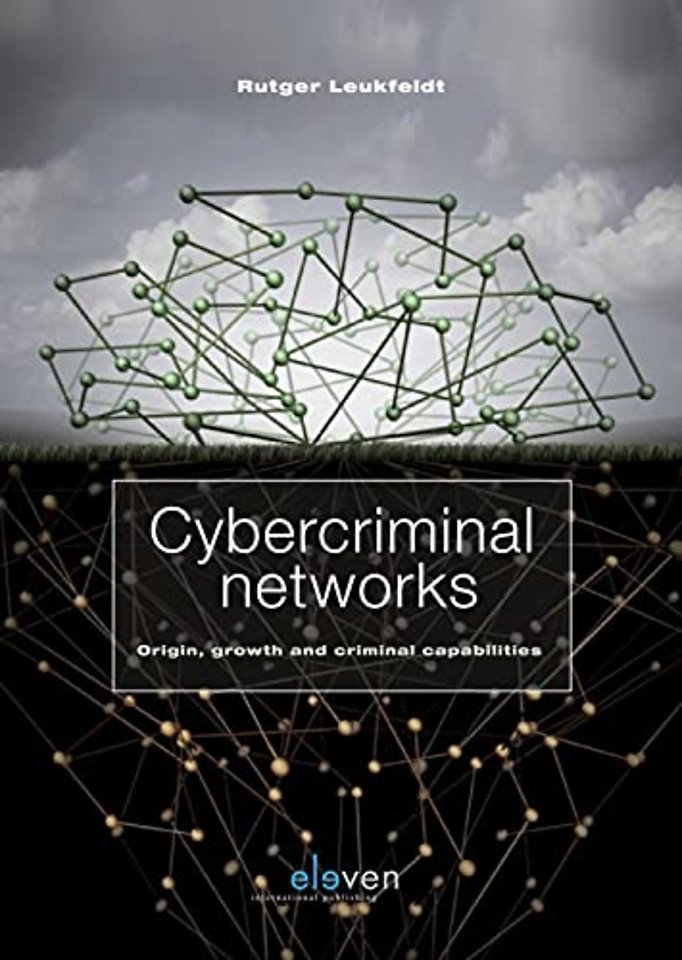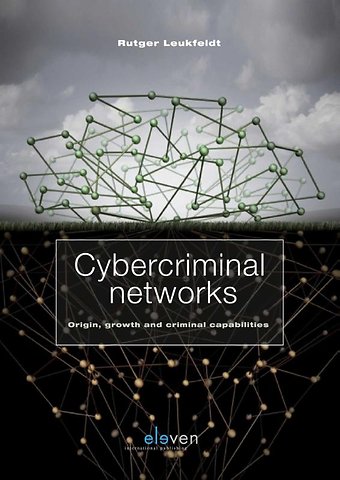Cybercriminal Networks
Origin, Growth and Criminal Capabilities
Paperback Engels 2016 1e druk 9789462367081Samenvatting
This book is about cybercriminal networks that make use of digital means, such as phishing, malware or hacking, to steal money from customers of financial institutions. The author analyzes the processes of origin and growthand criminal capabilities, and puts forward several explanations for the differences found between traditional criminal networks and cybercriminal networks.
His most important findings are that although the majority of these cybercriminal networks still rely on real-world social ties for their origin and growth, some networks make full use of the advantages that digitization provides. As a new kind of offender convergence setting, forums provide a fluid form of cooperation, making dependency relationships seen in traditional criminal networks less important. Furthermore, examples were found of prolonged, repeated interaction through online communities, which raises the question to what extent digital social ties differ from their real-world counterparts.
This study forms an important evidence-based contribution to the criminological knowledge about cybercriminal networks. Furthermore, based on the empirical results, the author outlines possibilities for situational crime prevention against cybercriminal networks. This book will therefore be of interest both to academics and practitioners in the field of cybercrime and cyber security.
Specificaties
Lezersrecensies
Inhoudsopgave
1.1 Background
1.2 Research questions
1.3 Data and methods
1.4 Outline for dissertation
PART I: THEORY
2. Cybercrime, social opportunity structures and routine activity theory
2.1 Introduction
2.2 Cybercrime and social opportunity structures
2.3 Cybercrime and routine activity theory
2.4 Theoretical model of social opportunity structures and routine activities
PART II: CYBERCRIMINAL NETWORKS
3. Cybercrime and social ties
3.1 Introduction
3.2 Data and methods
3.3 Phishing: the Amsterdam case
3.4 Similarities and differences between the case reported by Soudijn and Zegers and the Amsterdam case
3.5 Opportunities for situational crime prevention
3.6 Conclusion and discussion
4. Social ties versus digital ties within cybercriminal networks
4.1 Introduction
4.2 (Cyber)criminal networks and social opportunity structures
4.3 Data and methods
4.4 Empirical results
4.5 Discussion and conclusion
5. A taxonomy of cybercriminal networks
5.1 Introduction
5.2 Social opportunity structures
5.3 Data and methods
5.4 Criminal opportunities
5.5 Mapping the networks
5.6 Taxonomy
5.7 Conclusion and discussion
6. Origin, growth and criminal capabilities of cybercriminal networks
6.1 Introduction
6.2 Prior empirical research in the Netherlands
6.3 Data and methods
6.4 Results
6.5 Conclusion and discussion
7. Money mules
7.1 Introduction
7.2 Prior empirical research on cybercriminal networks and money mules
7.3 Data and methods
7.4 Results
7.5 Conclusion and discussion
PART III: SUITABLE TARGETS
8. Suitable targets for phishing
8.1 Introduction
8.2 Suitable targets: expectations based on routine activity theory
8.3 Data and methods
8.4 Suitable targets: risk factors
8.5 Discussion: opportunities for crime prevention
9. Suitable targets for phishing and malware compared
9.1 Introduction
9.2 Suitable targets: expectations based on routine activity theory
9.3 Data and methods
9.4 Suitable targets: risk factors compared
9.5 Conclusion and discussion
10. An in-depth analysis of suitable targets
10.1 Introduction
10.2 Theoretical background
10.3 Methods
10.4 Results
10.5 Conclusion and discussion
PART IV: CONCLUSION AND DISCUSSION
11. Conclusion and discussion
11.1 Introduction
11.2 What are the processes of origin and growth of the cybercriminal networks?
11.3 What is the structure of cybercriminal networks?
11.4 What is the modus operandi of cybercriminal networks?
11.5 Who are suitable targets for cybercriminal networks?
11.6 Theoretical implications
11.7 Practical implications: possibilities for situational crime prevention
11.8 Research limitations and future research directions
Summary
Samenvatting
References
Appendix 1: Definitions
Appendix 2: Analytical framework cybercriminal networks
Appendix 3: Informed consent study into cybercriminal networks
Acknowledgements
Curriculum vitae
Publications
Anderen die dit boek kochten, kochten ook
Rubrieken
- advisering
- algemeen management
- coaching en trainen
- communicatie en media
- economie
- financieel management
- inkoop en logistiek
- internet en social media
- it-management / ict
- juridisch
- leiderschap
- marketing
- mens en maatschappij
- non-profit
- ondernemen
- organisatiekunde
- personal finance
- personeelsmanagement
- persoonlijke effectiviteit
- projectmanagement
- psychologie
- reclame en verkoop
- strategisch management
- verandermanagement
- werk en loopbaan







